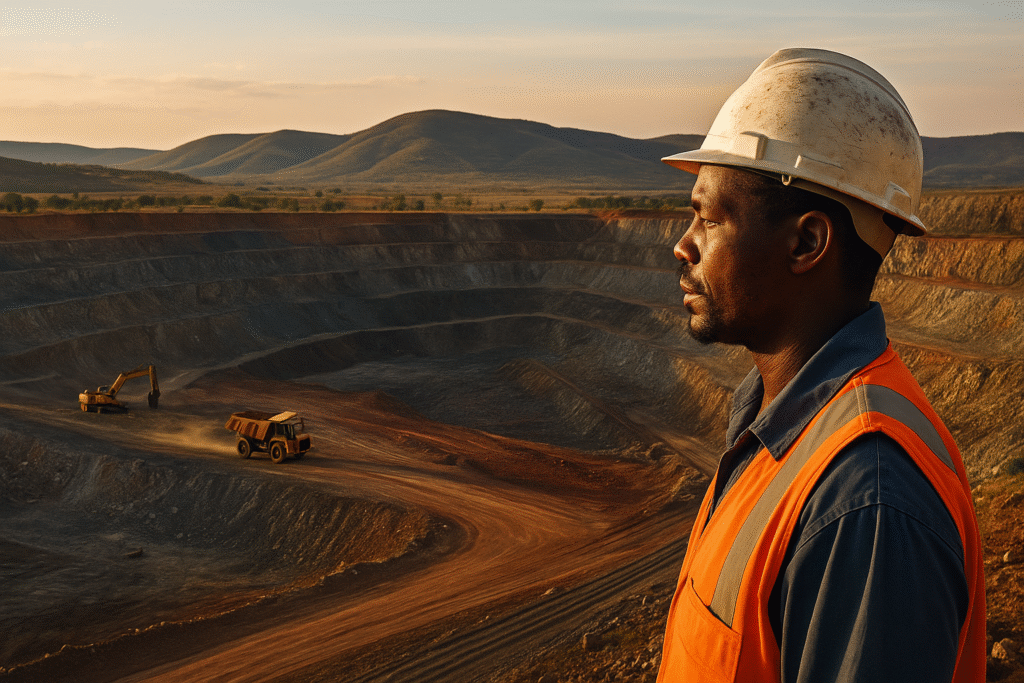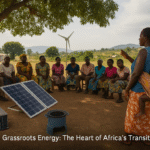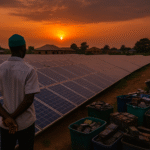When the World Economic Forum released its recent analysis on the role of Southern Africa in the global energy transition, one figure stood out: countries like Zambia, Namibia, and Zimbabwe collectively hold nearly a third of the world’s known reserves of critical minerals essential for renewable technology. These include cobalt, lithium, rare earth elements, manganese, and more, the very building blocks of the clean energy economy.
For Africa, this is more than a resource statistic. It is a geopolitical advantage, an industrial opportunity, and, if handled wisely, a path toward economic transformation. But the question remains: will Southern Africa simply supply the raw materials, or will it anchor the entire value chain for the green revolution?
The Global Stakes: Why Critical Minerals Matter
The global race to decarbonise economies is driving unprecedented demand for critical minerals. Wind turbines, solar panels, and electric vehicle batteries all depend on mineral inputs. For instance, lithium is vital for energy storage, cobalt stabilises high-capacity batteries, and rare earth elements power high-efficiency motors and generators.
According to the International Energy Agency, global demand for these minerals could quadruple by 2040. This surge is sparking both investment opportunities and geopolitical competition. In this landscape, Southern Africa’s mineral wealth positions it not just as a supplier but as a potential policy shaper in the global clean energy market.
However, as history shows, resource abundance alone does not guarantee prosperity. Without a deliberate strategy, countries risk repeating the extractive model that has left much of Africa resource-rich but economically poor.
Southern Africa’s Mineral Map
Zambia is already a major copper producer, with growing cobalt and manganese potential, both crucial for electric vehicles. Namibia holds significant uranium reserves, key for nuclear energy, as well as lithium deposits that are attracting global investors. Zimbabwe boasts some of the largest lithium reserves in the world and is already positioning itself as a regional processing hub.
These resources are not only abundant but also high-grade and relatively accessible, giving the region a competitive edge. Moreover, proximity between countries offers opportunities for regional value chains, where raw materials mined in one nation can be processed in another, creating cross-border economic linkages.
The Value Addition Imperative
The challenge is clear: how to avoid the trap of being mere exporters of raw minerals while importing expensive finished products. Value addition is the answer.
A tonne of raw lithium ore sells for a fraction of the price of processed lithium carbonate, which in turn is worth less than the lithium-ion batteries it helps create. The more steps of the value chain that happen within Southern Africa, the greater the job creation, technology transfer, and fiscal revenue.
For example, Zimbabwe’s recent policy moves to restrict unprocessed lithium exports are a step towards retaining value. Namibia is negotiating with investors for local processing plants. Zambia has signalled openness to joint ventures for battery manufacturing. But these policies need coordination, strong governance, and infrastructure investment to succeed.
Read our related post on Africa’s mineral wealth and value addition.
Industrialisation Through Critical Minerals
Critical minerals could be the engine for a new wave of African industrialisation. Beyond battery plants, minerals like cobalt and manganese have applications in steelmaking, electronics, and renewable infrastructure manufacturing. By leveraging regional trade agreements like the African Continental Free Trade Area (AfCFTA), Southern Africa could become a manufacturing hub supplying both domestic and global markets.
However, industrialisation is capital-intensive and requires not just mineral deposits but also power, transport, skilled labour, and supportive policies. This is where coordinated regional strategies become vital.
Environmental and Social Considerations
The clean energy transition must also be a just transition. Communities near mining operations have historically borne the brunt of environmental degradation, displacement, and poor labour conditions. The push for critical mineral extraction cannot repeat these injustices.
Responsible mining practices, transparent revenue management, and genuine community engagement must be non-negotiable. Tools like the Extractive Industries Transparency Initiative (EITI) and adherence to Environmental, Social, and Governance (ESG) standards can help align development with rights-based approaches.
Global Partnerships and the Risk of New Dependency
International players from China, the EU, and the US are already courting Southern African governments for mineral access. While foreign investment is needed, unbalanced agreements risk locking Africa into new forms of dependency, where value and profits flow offshore.
African governments must negotiate from a position of strength, insisting on technology transfer, local procurement, and skills development as part of any mineral deal. Strategic alliances between African countries can enhance bargaining power.
Explore our analysis on financing Africa’s energy transition.
The Role of Civil Society
Civil society organisations have a critical role in ensuring transparency, advocating for community rights, and monitoring environmental standards. They can also help amplify grassroots voices in policy discussions, ensuring that benefits from mineral wealth are equitably shared.
At EnergyTransitionAfrica.com, we have consistently argued that the mineral boom must not be another missed opportunity. This requires vigilance, advocacy, and the inclusion of diverse voices, from miners to policymakers to women entrepreneurs.
Building the Anchor: Policy Priorities for Southern Africa
- Regional Value Chain Development – Coordinate investment in processing, refining, and manufacturing across borders.
- Infrastructure Investment – Prioritise transport corridors, reliable energy, and digital infrastructure to support industrial growth.
- Skills Development – Partner with universities and technical institutes to train a workforce for the green economy.
- Environmental Safeguards – Enforce strict mining regulations and community benefit agreements.
- Strategic Partnerships – Negotiate trade and investment deals that include technology transfer and market access.
Conclusion: From Mineral Wealth to Shared Prosperity
Southern Africa’s critical mineral reserves are not just an asset; they are leverage. Used wisely, they can position the region as a cornerstone of the global clean energy future, creating jobs, building industries, and powering homes. Used poorly, they risk entrenching inequality and dependency.
The world is watching. The choices Southern Africa makes in the next decade will determine whether it remains a supplier of raw materials or emerges as a global hub of clean energy manufacturing and innovation.
The future is in our hands. Let’s ensure it is powered by more than minerals; let’s power it with vision.
Follow Energy Transition Africa for more updates:
![]()
![]()
Vincent Egoro is a leading African voice on the just energy transition, fossil fuel phaseout and critical minerals governance. With over a decade of regional advocacy experience, he works at the intersection of transparency, accountability and sustainability, advancing community-driven solutions that put Africa at the heart of global climate action.



